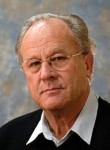The Industrial Mathematics and Gravity Group (IMGG) at Lancaster University is applying methods of differential geometry and the electrodynamics of continuous media to fundamental problems in laser-plasma interactions and electron beam dynamics in the vacuum. The research is motivated by contemporary challenges that arise in the control of beam stability in the presence of coherent electromagnetic radiation in intense light-sources and future laser wakefield accelerators.
A principle aim of our work is to explore the motion of large collections of rapidly accelerating charged particles in small bunches moving at ultra-relativistic energies in the laboratory (see, for example, Cockcroft-05-05 paper on the behaviour of relativistic spinning particles in electromagnetic fields). We have developed a covariant perturbation theory (paper in Ann. Phys. 2007) that offers a new mathematical approach in regimes where a charged fluid description provides insights to collective effects analogous to turbulent mixing in fluid dynamics (paper in J. Phys. A 2007). This work is being developed in a number of directions including the influence on the bunches of boundary effects of various kinds, the influence of radiation reaction and the inclusion of statistical fluctuations via a new formulation of the relativistic Maxwell-Vlasov equation.
We are also members of the Cockcroft Institute. An active collaboration is maintained with Peter Norreys and Raoul Trines of the Plasma Physics Group at the Central Laser Facility, Rutherford Appleton Laboratory (STFC).
Prof. Robin Tucker
email: r.tucker@lancaster.ac.uk

Robin is Professor of Mathematical Physics and Head of the Theory Division in the Department of Physics, Lancaster University. His main interests encompass the application of differential geometric methods to problems in electrodynamics, continuum mechanics and gravitation and in particular the initial-boundary problem in coupled Maxwell systems with dynamic sources. Recently he has developed a new approach to analyse the interaction of charged, spinning particles with external fields (paper in Proc. R. Soc. A 2004 and paper in Phil. Mag. 2005), leading to new insights into the dynamics of moving anisotropic magneto-electric polarisable media (paper in Phys. Letts. A 2007). Attempts are currently underway to understand coherent synchrotron radiation effects in plasmas and charged beams in confining geometries (paper in Theoretical Appl. Mech.2007) and the instabilities induced by back-reaction due to radiation. Work is also underway on integral equation methods for the calculation of wake-field impedances due to mobile charges in guiding wave structures of variable cross-section and a new formulation for the statistical mechanics of relativistic particles with spin taking into account radiation reaction.
Dr David Burton
email: d.burton@lancaster.ac.uk
 David is a Lecturer in Mathematical Physics in the Department of Physics, Lancaster University. His background is in non-linear field theory and applied differential geometry. His work focuses on topics at the interfaces between electromagnetism, fluid dynamics, continuum mechanics and gravity. Prior to developing an interest in laser wakefield acceleration, his recent research on electromagnetic phenomena included detection of the Earth’s gravitomagnetic field using twisted electromagnetic modes (paper in Class. Quantum Grav. 2005 and paper in Gen. Rel. Grav. 2005). He is currently investigating novel models of warm electron beams that include quantum corrections and is developing new approaches for analysing relativistic plasmas close to wave-breaking in collaboration with Peter Norreys and Raoul Trines (CLF – STFC).
David is a Lecturer in Mathematical Physics in the Department of Physics, Lancaster University. His background is in non-linear field theory and applied differential geometry. His work focuses on topics at the interfaces between electromagnetism, fluid dynamics, continuum mechanics and gravity. Prior to developing an interest in laser wakefield acceleration, his recent research on electromagnetic phenomena included detection of the Earth’s gravitomagnetic field using twisted electromagnetic modes (paper in Class. Quantum Grav. 2005 and paper in Gen. Rel. Grav. 2005). He is currently investigating novel models of warm electron beams that include quantum corrections and is developing new approaches for analysing relativistic plasmas close to wave-breaking in collaboration with Peter Norreys and Raoul Trines (CLF – STFC).
Dr Jonathan Gratus
email: j.gratus@lancaster.ac.uk
 Jonathan is a Lecturer in Mathematical Physics with interests in relativistic continuum mechanics and electrodynamics (paper in J. Phys A 2007) and Proceedings of GIFT 2006, Cockcroft Institute). In collaboration with Robin he is developing a new formulation of relativistic statistical mechanics of charged particles in order to understand the effects of coherent and incoherent synchrotron radiation in plasmas and charged beams.
Jonathan is a Lecturer in Mathematical Physics with interests in relativistic continuum mechanics and electrodynamics (paper in J. Phys A 2007) and Proceedings of GIFT 2006, Cockcroft Institute). In collaboration with Robin he is developing a new formulation of relativistic statistical mechanics of charged particles in order to understand the effects of coherent and incoherent synchrotron radiation in plasmas and charged beams.

